Roundabouts: An Innovative Solution to Intersection Safety
A roundabout is a circular intersection design where traffic travels at low speed around a central island, and entering traffic must yield to circulating traffic. Roundabouts are becoming increasingly common in the United States.
Driving in a roundabout is safer and more efficient when compared to traditional signalized intersections and stop-controlled intersections. In a roundabout, the cars are traveling at a slower speed (approx. 15-20 mph), there are fewer conflict points, and if crashes occur, they are much less severe. Studies have shown that when compared to signalized intersections, roundabouts result in:
90% fewer traffic fatalities
75% fewer injury collisions
Not only are roundabouts safer, but they allow for more traffic to move through an intersection with significantly less delay than if it was signalized. A typical 4 way stop intersection has 32 possible vehicle conflict points and 24 pedestrian conflict points, while a roundabout has 8 vehicular conflict points and 8 pedestrian conflict points. Pedestrians only have to cross one to two lanes at a time and only have to look in one direction at a time, which increases safety for people crossing.

For more information and resources visit https://highways.dot.gov/safety/intersection-safety/intersection-types/roundabouts
Navigating the Roundabout
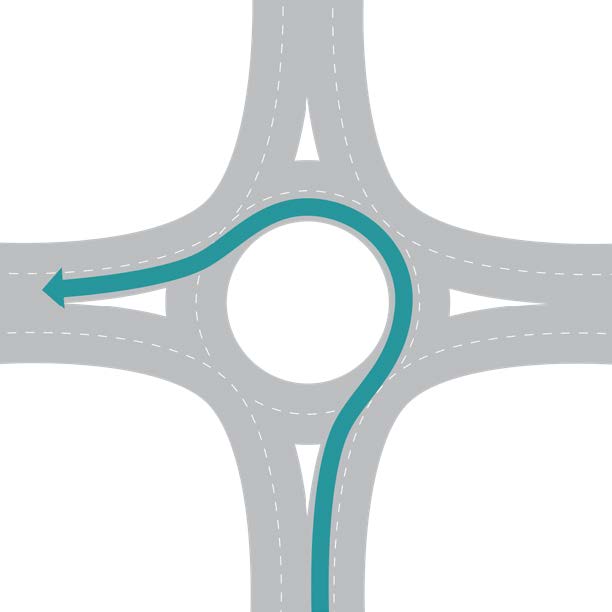
Left Turn
Use the left lane
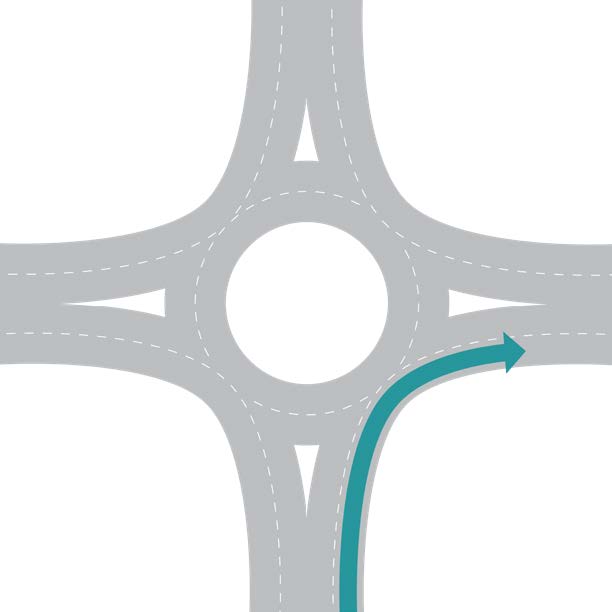
Right Turn
Use the right lane
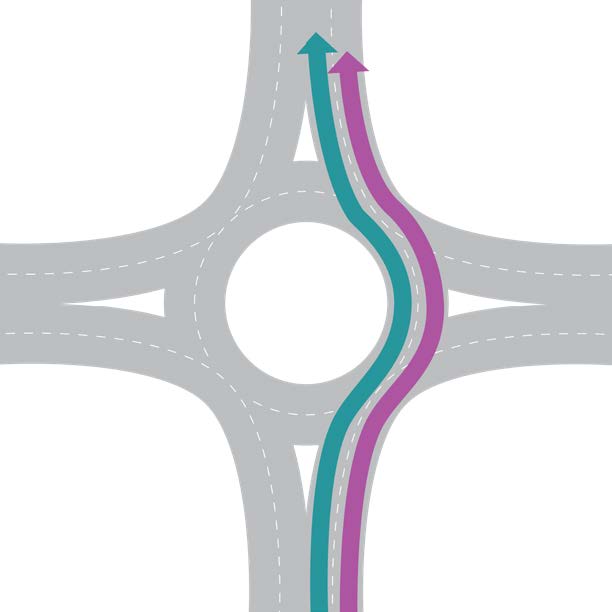
Through Traffic
Either lane is fine
Driving Safely Through Roundabouts
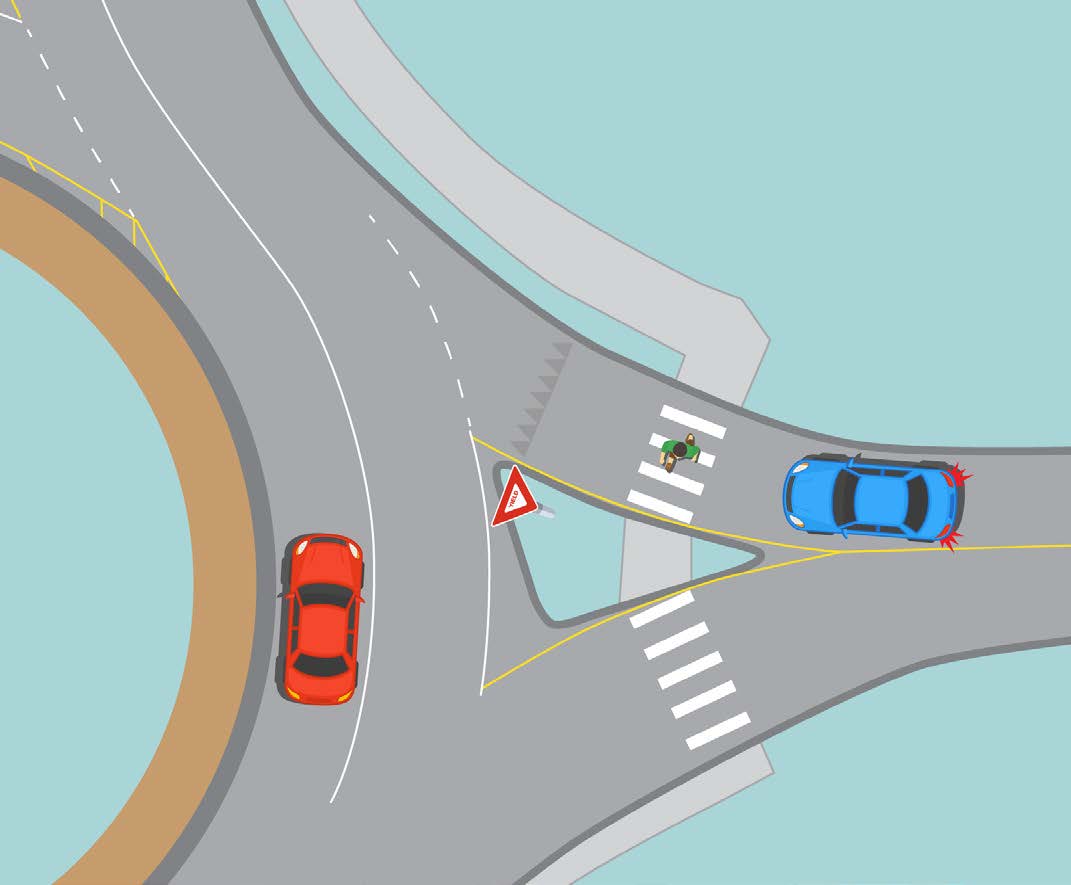
SLOW DOWN, LOOK AROUND
1. SLOW DOWN AND LOOK AROUND
- Enter the roundabout at a slower speed. Crashes that do occur will be much less severe.
- Slowing down helps to see pedestrians and bicyclists sharing the road with you.
2. Choose Your Lane and Use Your Turn Signal
- Choose the lane for where you want to go after you exit the roundabout. Signs and markings will help you select a lane before you enter the roundabout
- Use the left lane to go left, the right lane to go right, and either lane to go straight through, unless otherwise indicated. Avoid lane changes while in the roundabout.
- Use your turn signal to indicate when you will exit the roundabout.
- Check the crosswalks to see if anyone is waiting to cross or is already crossing. Be ready to stop and let them safely finish.
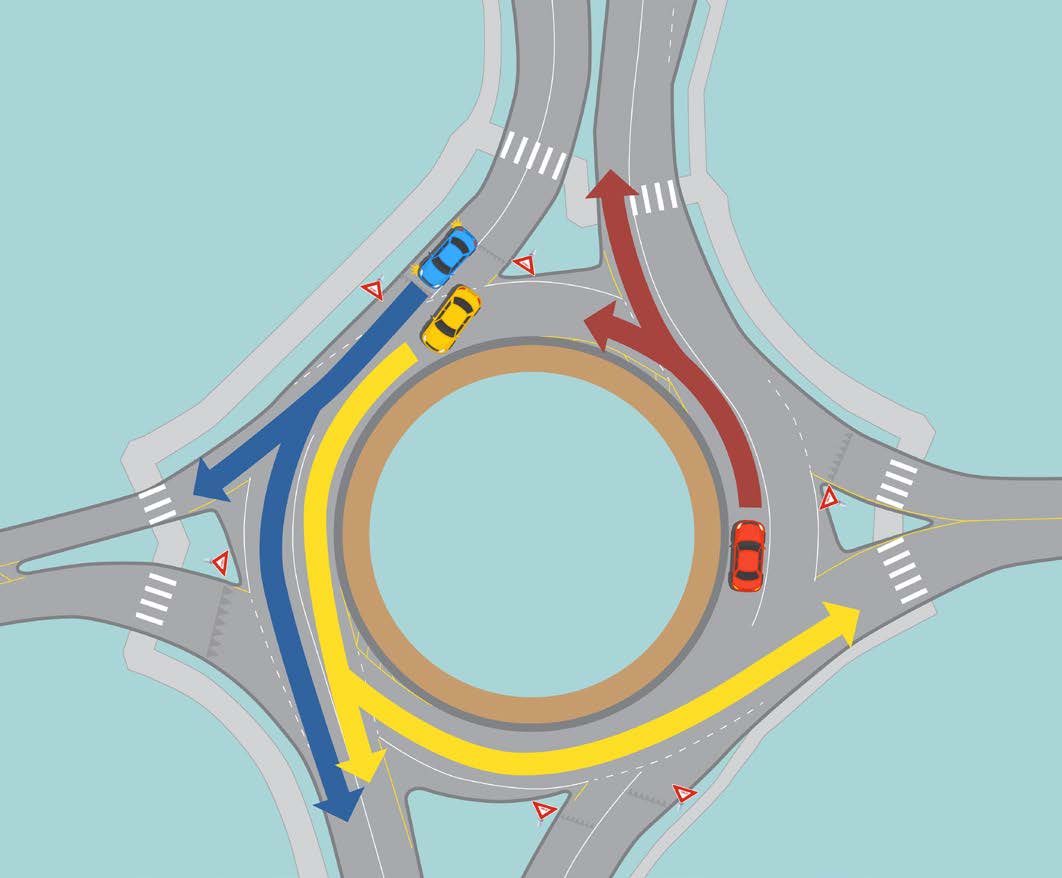
CHOOSE LANE, USE SIGNAL
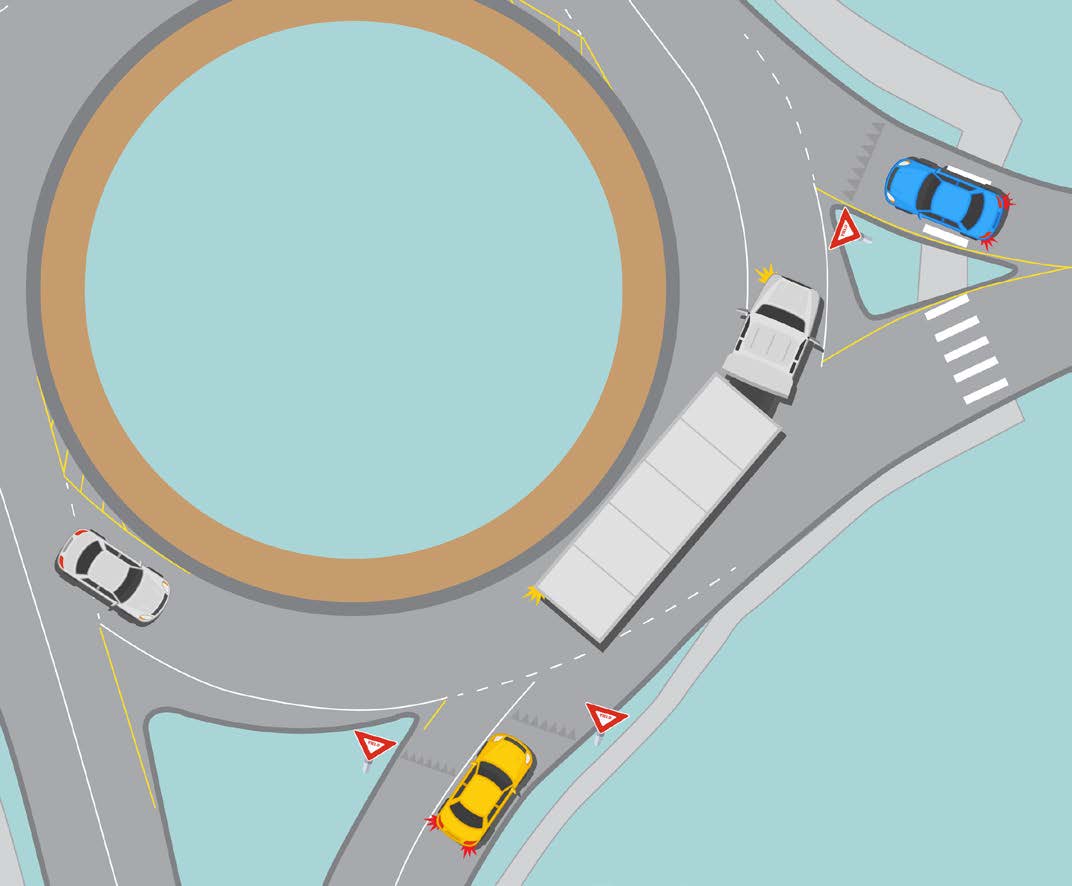
BE READY TO YIELD
3. BE READY TO YIELD
- Yield to traffic in all lanes of the roundabout, not just in the lane closest to you.
- If large vehicles like semi-trucks are in the roundabout, give them extra space and avoid driving next to them inside the dual-lane roundabout. Semi-trucks are allowed to use both lanes in the roundabout and drive over the truck apron in the center island.
- Follow the pavement markings to stay in the correct lane as you leave the roundabout.
- Look around one more time for anyone in the crosswalk and be ready to yield as you exit the roundabout.
